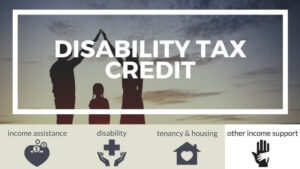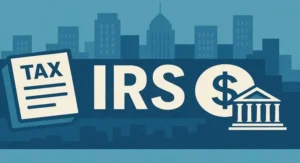Tax Refunds in the United States: Know the process
Do you want to know if all Americans receive a tax refund? Know more about Tax refund
Introduction to Tax Refunds
Every spring, millions of Americans eagerly await their tax refunds, often viewing them as a financial windfall. But what exactly is a tax refund, and why do some people receive money back from the IRS even if they didn’t pay taxes? The U.S. tax system, with its complexities and nuances, can be confusing, especially when it comes to understanding why refunds vary so widely.
Lots of thread have been going on with questions about this topic, reflecting a mix of curiosity and frustration. Questions such as “Is it wild to anyone else that Americans still…” grapple with this system, while some wonder why some receive refunds without paying taxes. This guide dives deep into the mechanics of tax refunds, addressing these questions and more, with insights drawn from real-world discussions and official sources like USA.gov.
Our goal is to demystify tax refunds, explain who qualifies, and clarify why some individuals receive money back even if they owe nothing. We’ll explore refundable tax credits, the role of withholding, and common misconceptions that fuel debates online. By the end, you’ll have a clear understanding of how the system works and how to navigate it effectively. Let’s get started.
What Are Tax Refunds and How Do They Work?
A tax refund is money returned to a taxpayer by the IRS (or state tax authority) when the amount of taxes paid exceeds the amount owed for a given tax year. Most Americans pay taxes throughout the year via payroll withholding, where employers deduct a portion of each paycheck to cover federal and state income taxes. At the end of the year, when you file your tax return, the IRS calculates your actual tax liability based on your income, deductions, and credits. If you overpaid through withholding or qualify for certain credits, you receive a refund.
Think of it like prepaying for a service. Imagine you’re at a restaurant and leave a $20 deposit for a meal you expect to cost $15. If the final bill is only $10, the restaurant returns $10 to you. Similarly, if your withholdings or estimated tax payments exceed your tax liability, the IRS refunds the difference. However, unlike a restaurant, the IRS doesn’t pay interest on overpayments (except in rare cases of significant delays), which is why some financial experts argue that large refunds are essentially an interest-free loan to the government.
Refunds aren’t guaranteed, though. Some taxpayers owe money if their withholdings were too low or they had additional income (e.g., from freelance work or investments). Others may break even, owing nothing and receiving nothing. The variability of refunds sparks much of the confusion seen in online discussions, other threads where users express surprise at fluctuating refund amounts despite stable incomes.
Who Receives Tax Refunds?
Not all Americans receive tax refunds. According to discussions, only those who overpay their taxes or qualify for refundable tax credits get money back. Here’s a breakdown of who typically receives refunds:
- W-2 Employees with Overwithholding: Most refunds go to employees whose employers withheld more from their paychecks than their final tax liability. This happens when the withholding formula, based on your W-4 form, overestimates your tax obligation.
- Low-Income Earners with Refundable Credits: Some individuals, particularly those with low incomes, receive refunds even if they paid little or no taxes, thanks to refundable credits like the Earned Income Tax Credit (EITC) or Child Tax Credit (CTC).
- Taxpayers with Deductions: Those who qualify for deductions (e.g., mortgage interest, charitable contributions) or non-refundable credits may reduce their tax liability below what was withheld, resulting in a refund.
USA.gov notes that not everyone needs to file taxes, especially if their income falls below certain thresholds (e.g., $14,600 for single filers under 65 in 2025). However, filing is often worthwhile for low-income individuals who might qualify for refundable credits, even if they owe no taxes. This explains why some receive refunds despite not paying income tax.
Refundable Tax Credits: The Key to “Free” Refunds
One of the most common questions on the thread is, “Why do some people get refunds if they didn’t pay taxes?” The answer lies in refundable tax credits, which can result in a refund even if your tax liability is zero. Unlike non-refundable credits, which only reduce the taxes you owe, refundable credits can generate a payment from the IRS if the credit exceeds your liability.
Key Refundable Credits
- Earned Income Tax Credit (EITC): Designed for low- to moderate-income workers, the EITC can provide significant refunds, especially for families with children. For 2025, the maximum EITC ranges from $632 for individuals with no children to over $7,800 for those with three or more qualifying children.
- Child Tax Credit (CTC): Partially refundable, the CTC offers up to $2,000 per qualifying child, with up to $1,700 refundable for 2025. This means families can receive money back even if they owe little or no taxes.
- American Opportunity Tax Credit (AOTC): For students, this credit covers up to $2,500 of education expenses, with 40% (up to $1,000) refundable.
These credits are legal and intentional, designed to support low-income households, encourage education, and reduce poverty. However, they spark debate online, with some questioning why non-taxpayers receive money.
The reality is that these credits are a form of social policy, redistributing funds to those who need them most. Some thread noted that “kids are tax gold mines” due to credits like the CTC, highlighting how these benefits can significantly boost refunds.
Tax Withholding: The Root of Most Refunds
Tax withholding is the primary reason most Americans receive refunds. When you start a job, you fill out a W-4 form, which tells your employer how much tax to withhold from your paycheck. The IRS uses a formula based on your income, filing status, and allowances (or exemptions) to estimate your tax liability. However, this estimate is often imprecise, leading to over- or under-withholding.
If too much is withheld, you get a refund. If too little, you owe money. Some thread emphasized that getting a large refund means you’ve given the government an “interest-free loan,” a sentiment echoed by many tax professionals. For example, if you receive a $5,200 refund, that’s roughly $100 per week you could have had in your paycheck to save, invest, or spend. Conversely, some prefer large refunds as a forced savings mechanism, especially if they struggle to save otherwise.
To adjust withholding, you can update your W-4. Claiming fewer allowances (e.g., “Single 0”) increases withholding, potentially leading to a larger refund. Claiming more allowances reduces withholding, putting more money in your paycheck but risking a tax bill if miscalculated. The IRS’s withholding calculator can help you find the right balance.
Common Misconceptions About Tax Refunds
Tax refunds are riddled with misunderstandings, many of which surface in online discussions. Here are some of the most persistent myths, debunked:
- Myth: Everyone Gets a Refund – Not all Americans receive refunds. Those who underpay taxes or have complex income sources (e.g., self-employment) may owe money instead.
- Myth: Refunds Are Free Money – A refund is typically your own money returned to you, not a gift from the government. Refundable credits are an exception, acting as a payment for qualifying taxpayers.
- Myth: Tax Brackets Hurt Your Pay – A common misconception, highlighted in a thread, is that moving to a higher tax bracket reduces your take-home pay. The U.S. uses a progressive tax system, where only the income above a threshold is taxed at a higher rate.
- Myth: You Can Avoid Taxes with Loopholes – While deductions and credits can reduce your tax liability, outright tax evasion is illegal.
These misconceptions fuel frustration, as seen in a Lots of thread post questioning why refund amounts fluctuate despite stable incomes. Changes in tax laws, credits, or personal circumstances (e.g., marriage, children) can all affect refunds, making predictability challenging.
Frequently Asked Questions About Tax Refunds
Do all Americans receive a tax refund?
No, not all Americans receive a tax refund. Refunds depend on overpayment through withholding or eligibility for refundable credits. Some taxpayers owe money if their withholdings are insufficient or they have additional income sources.
Why would someone who didn’t pay taxes get a refund?
Refundable tax credits, like the Earned Income Tax Credit or Child Tax Credit, can result in a refund even if no taxes were paid. These credits are designed to support low-income individuals and families, and they’re entirely legal.
Is it bad to get a large tax refund?
It depends. A large refund means you overpaid taxes throughout the year, essentially lending money to the government interest-free. Some prefer this as a forced savings method, but others argue you could have used that money earlier by adjusting your W-4.
How can I avoid owing taxes or getting a large refund?
Use the IRS withholding calculator to adjust your W-4 form accurately. This ensures your withholdings align closely with your tax liability, minimizing refunds or amounts owed.
Why do my refunds vary each year?
Refunds can fluctuate due to changes in income, deductions, credits, or tax laws. For example, adjustments to the EITC threshold or new dependents can significantly alter your refund amount.
More New on TaxRelief Portal
- USA - Federal Student Loan Instead of a Private Loan?
- EDD Employment Development Department: How to Apply
- Understanding the W-2 Form: The Wage and Tax Statement USA


